The end of the Zaporizhzhya Sich. Ukrainian mythology and political reality
Zaporizhzhya Sich - a unique military republic
Initially, Zaporizhzhya Sich played an important role in protecting the Slavic lands from the raids of the Crimean Tatar army. Zaporozhye Cossacks were considered wonderful warriors and, I must say, they repeatedly confirmed their fame - no wonder they were afraid of them in the Polish-Lithuanian Commonwealth and in the Crimean Khanate. At the same time, it would hardly be correct to define the Zaporizhzhya Sich as a “Ukrainian” political entity. To begin with, the ethnonym “Ukrainians” itself appeared only at the end of the 19th century and was introduced into the public consciousness thanks to the efforts of Austro-Hungarian propaganda. Until that time, the ancestors of a significant part of modern Ukrainians were called “Little Russians” in Russia, and called themselves “Ruthenians” or “Rusyns” themselves. As for the Zaporozhye Cossacks, they never identified themselves with the Little Russian population, moreover - in every way they tried to distance themselves from it. Of course, that in the composition of the Zaporizhzhya Sich, especially in the later stages of its existence, there was a strong Little Russian component. However, among the Sich people there were people of Turkic (Crimean-Tatar, Nogai, Turkish), Polish, Hungarian, Litvinsky (Belarusian), Greek, Armenian origin, and there were a lot of them, but nobody calls the Zaporozhian Sich Polish, Tatar, or Greek political education. Meanwhile, the way of life of Zaporizhzhya Cossacks was more similar to the way of life of nomadic Turks, rather than the way of life of the Little Russian peasantry. Even in verbal communication, Zaporizhzhya Cossacks used a lot of Turkic words, starting with such basic concepts as the “Cossack”, “Kosh”, “Ataman”, “Esaul”, etc .. This is explained not only by close proximity to the Crimean Khanate and Nogai . The Cossacks were largely the descendants of Christianized and Russian-speaking groups of the Turkic population - the same fornicators. In turn, these groups of the Turkic population were also formed not from scratch, but included, assimilated the pre-Turkic population of the Steppe - the same Iranian-speaking Alans. For a long time, the ethnic community of the Cossacks was called Cherkasy. N.I. Karamzin writes: “let us remember the Kasogs, who, according to our chronicles, lived between the Caspian and Black Sea; let us also recall the country of Kazakhia, which is supposed to be the Emperor Constantine Porphyrogenitus in the same places; Let us add that the Ossetians nowadays call Cherkessov Kasakhs: so many circumstances make us think that Torquay and Berendei were called Cherkasy, were called Kozaks ”(Karamzin N.I. The History of the Russian State). Thus, the Cossacks were formed almost independently of the Little Russian population, and issuing Zaporizhzhya Cossacks for the ancestors of modern Ukrainians is a very controversial political maneuver.
Admission to the Zaporizhzhya Sich was carried out in the event that the candidate met several basic requirements. First, the visitor had to be “free” in origin, that is, a nobleman, a Cossack, a priest’s son, a free peasant, or even a “basurman”, but by no means a serf. Secondly, he had to know the "Cossack language", that is, the dialect of the Russian language, which the Cossacks spoke. Thirdly, the candidate was supposed to be Orthodox by religion, and if he professed a different religion, then he should be baptized into Orthodoxy. Among the Cossacks there were many baptized Catholics, Muslims and even Jews. Arriving in the Zaporizhzhya Sich, the candidate for the Cossacks mastered the martial art and customs of the Zaporozhian Cossacks, and only seven years later he could become a full-fledged "comrade" of the Zaporizhzhya Sich. In addition, the Cossacks were forbidden to marry and maintain regular relations with women - this related them to the European military and religious orders. Naturally, representatives of such a structure with a certain contempt belonged to the peasant population of Little Russia, which, however, was characteristic of any warriors and nomads who put themselves incommensurably above the peasants - farmers and urban artisans and traders. Even with great rejection, the Cossacks treated the Catholics — the Poles and the Uniates — the inhabitants of the Galician lands belonging to the Polish-Lithuanian Commonwealth — the very “Westerners”, who today, for some reason, consider themselves descendants of the “Zaporozhye Cossacks” (although where is Lviv and where is Zaporozhskaya Sich? ). At the same time, among the Cossacks, there were quite a few Polish gentry who crossed over to Orthodoxy, who, for whatever reason, fled from the Polish-Lithuanian Commonwealth to the Zaporizhian Sich. Some of these gentry became the conductors of anti-Russian sentiments and influenced some of the Cossacks, spreading among them the rejection of "Muscovy" and sympathy for the Polish-Lithuanian Commonwealth. It is likely that it was they who inculcated Cossacks in the Russian world into the Cossack consciousness and ideology. Thus, among the Cossack elite, the concept of the Khazar origin of the Cossacks spread - supposedly the Cossacks actually went back to the ancient Khazars, who converted to Orthodoxy before Russia - directly from Constantinople. By this, the anti-Russian part of the Cossack elite sought to undermine the religious ties of the Russian state and the Cossacks, cut off the Cossacks from the Russian world and give a historical basis to possible conflicts between the Cossacks and the Russian state.
In the perception of the Zaporizhzhya Sich, as Nikolai Ulyanov, a researcher of Ukrainian nationalism, rightly notes, two main contradictory tendencies have been established since ancient times. According to the first trend, Zaporizhzhya Cossacks were an expression of genuinely popular aspirations, an example of democracy and self-government. Any depressed person, according to this theory, could run to the Sich, be nailed to the Cossacks. The way of life of the Cossacks, based on daily self-government, went against the orders of most of the state formations of that time - both European and, especially, Asian. The second trend, on the contrary, asserts the aristocracy of the Zaporizhzhya Sich. Its adherents characterized the Cossacks as “lytsars”, that is, “knights”, aristocrats. It was this point of view that became firmly established among the part of the Polish gentry, who in the 16th century began to romanticize the image of the Zaporozhye Cossack as an ideal warrior - an aristocrat who practically renounced worldly vain life and devoted himself to the martial cause. Cossack as a free knight - this image impressed many Polish gentry, who saw in him the embodiment of his own ideology. Recall that the concept of “Sarmatianism” later spread among the Polish gentry - supposedly the Polish gentry descended from the Sarmatians - the legendary warriors of the Eurasian steppes. As is well known, the nobility also suffered from self-government, however, “internal democracy” was combined with the most severe oppression of the nobility of the Little Russian and Belarusian peasants. Democracy and self-government were for the elite, and the “residents” and for the people did not consider the rest of the Polish-Lithuanian Commonwealth as “psya krev”, that is, “dog's blood”. However, another part of the Polish gentry belonged to the Zaporozhye Cossacks with poorly concealed or not at all concealed contempt, since they saw in it more of robbers than “lytsars”. Crown hetman Jan Zamoysky said that the Zaporozhye Cossacks are not going to serve the fatherland, but for the sake of production. Robbery remained the main source of livelihood for the “core” of the Zaporozhian Sich — the very free Cossacks who never went to the service of the king. Children of the Steppe, they could not and did not want to exchange their free spirit for the need for systematic military service, accompanied by the abandonment of the former way of life and the subordination of any discipline. Nevertheless, the prospect of receiving regular salaries from the Polish crown inspired a significant number of Cossacks, who saw in the service of the Commonwealth a safer and more reliable source of livelihood than “free bread” with constant raids and subsequent punitive expeditions of Polish or Turkish troops to Zaporizhzhya Sich .
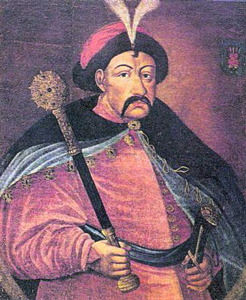 In 1572, a part of the Cossacks entered the service of the Polish king, after which it received the name of the "registered" Cossacks and actually turned into a type of professional army, unlike the Zaporizhzhya Sich, who preserved the traditions of Cossack freemen. Zaporizhian Sich was not recognized by the Commonwealth, which used registered Cossacks in the fight against it. The latter played a crucial role in conducting punitive operations against the Zaporizhzhya Sich. In turn, the Sich officers were very indignant at the fact that the registered Cossacks called themselves Zaporozhye Cossacks - after going to the service of the king, and then the Russian tsar, the registry Cossacks ceased to be free and renounced the Sich traditions, turned into a regular border guard, performing police functions . Registered Cossacks from 1572 were officially called the “Army of His Royal Grace of Zaporozhskoye” and performed the tasks of border guard and police service on the southern borders of the Polish-Lithuanian state, participated in military campaigns against the Crimean Khanate. At the same time, the registered Cossacks met with opposition from the Polish gentry - even despite the fact that there were many gentry in the ranks of the Zaporozhye army, who for some reason had fallen into the Cossacks. The Polish gentry did not want to share the privileges with "some Cossacks" and this also became one of the reasons for the Cossacks' discontent with the Polish-Lithuanian Commonwealth and its politics in Little Russia. Ultimately, in 1648, a grand uprising broke out against the Polish-Lithuanian Commonwealth, in which the Little Russian peasantry played a leading role, and the leading role was played by the Cossacks, led by Bogdan Khmelnitsky. As a matter of fact, the transfer of the Cossacks under the jurisdiction of the Russian Empire was the direct result of the rebellion of Bogdan Khmelnitsky. At the same time, Khmelnitsky himself can hardly be described as a pro-Russian politician - his transition to the Russian side was rather a forced step, caused by the desire to put pressure on the Polish-Lithuanian Commonwealth, to demonstrate to her the “independence” of the Zaporizhzhya Cossacks.
In 1572, a part of the Cossacks entered the service of the Polish king, after which it received the name of the "registered" Cossacks and actually turned into a type of professional army, unlike the Zaporizhzhya Sich, who preserved the traditions of Cossack freemen. Zaporizhian Sich was not recognized by the Commonwealth, which used registered Cossacks in the fight against it. The latter played a crucial role in conducting punitive operations against the Zaporizhzhya Sich. In turn, the Sich officers were very indignant at the fact that the registered Cossacks called themselves Zaporozhye Cossacks - after going to the service of the king, and then the Russian tsar, the registry Cossacks ceased to be free and renounced the Sich traditions, turned into a regular border guard, performing police functions . Registered Cossacks from 1572 were officially called the “Army of His Royal Grace of Zaporozhskoye” and performed the tasks of border guard and police service on the southern borders of the Polish-Lithuanian state, participated in military campaigns against the Crimean Khanate. At the same time, the registered Cossacks met with opposition from the Polish gentry - even despite the fact that there were many gentry in the ranks of the Zaporozhye army, who for some reason had fallen into the Cossacks. The Polish gentry did not want to share the privileges with "some Cossacks" and this also became one of the reasons for the Cossacks' discontent with the Polish-Lithuanian Commonwealth and its politics in Little Russia. Ultimately, in 1648, a grand uprising broke out against the Polish-Lithuanian Commonwealth, in which the Little Russian peasantry played a leading role, and the leading role was played by the Cossacks, led by Bogdan Khmelnitsky. As a matter of fact, the transfer of the Cossacks under the jurisdiction of the Russian Empire was the direct result of the rebellion of Bogdan Khmelnitsky. At the same time, Khmelnitsky himself can hardly be described as a pro-Russian politician - his transition to the Russian side was rather a forced step, caused by the desire to put pressure on the Polish-Lithuanian Commonwealth, to demonstrate to her the “independence” of the Zaporizhzhya Cossacks. Zaporozhtsy and Russia: victories, treason, punishment and forgiveness
In 1654, the Army of His Royal Grace Zaporozhskoye transferred to the service of the Russian Tsar and was renamed the Army of His Royal Majesty Zaporozhskoye. Thus, the registry Zaporozhye Cossacks voluntarily elected service to the Russian state. The Zaporozhskoye Nizovoi Army, that is, the Sich, remained an autonomous military force and attracted to participate in military campaigns against the Crimean Tatars, passed into citizenship of the Russian state. However, the uncontrolled Zaporizhian Sich caused a lot of trouble to the Russian state. First, the Sich did not disdain predatory attacks on the territory of both the Polish-Lithuanian Commonwealth and the Crimean Khanate, which led to problems in the relations between the Russian state and the Polish king and the Turkish sultan. Secondly, the hetmans, who felt the growing limitations of their power on the part of the Russian tsars, were displeased and periodically switched to the Polish side. The most famous example of the transition of the Cossacks to the side of opponents of Russia is the betrayal of Hetman Mazepa. Like his ideological heirs after three hundred years, Mazepa used the methods of manipulating the consciousness of ordinary Cossacks and Little Russians. In particular, he announced that Peter I wanted to drive all the inhabitants of Little Russia “over the Volga” and accused the Russian authorities of ruining the Little Russian lands worse than the Swedes and Poles. 28 March 1709, the ataman Gordienko and hetman Mazepa signed an allied treaty with Sweden, after which Mazepa swore allegiance to the King of Sweden, Karl XII. The Cossack masses supported Mazepa, because she was unhappy with the policies of Peter I, because he introduced fines to cover the damage delivered to the Russian treasury by the constant attacks of Cossacks on Turkish caravans.
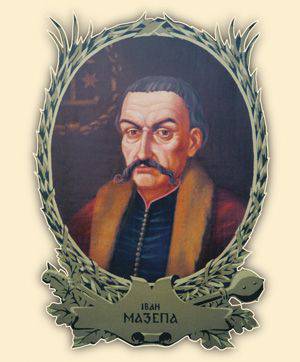 Cossack officers were offended by the imposition of a fine for "basurman" and chose to support Mazepa, who had transferred to the service of the Swedes. As a result, the aggravation of relations between Zaporizhzhya Sich and Russia has grown into a phase of armed conflict. Although what kind of conflict could be between a large state with a strong regular army and a military-political organization that was, in essence, a remnant of the Middle Ages. Three regiments of Russian regular troops under the command of Colonel Yakovlev besieged the fortifications of the Sich. However, the Cossacks defended themselves quite skillfully and even managed to capture a certain number of prisoners who were subsequently brutally killed. However, Cossack Colonel Ignat Galagan, who was familiar with the Sich defense system, helped Russian troops take the fortress by storm. She was burned, 156 Cossacks executed.
Cossack officers were offended by the imposition of a fine for "basurman" and chose to support Mazepa, who had transferred to the service of the Swedes. As a result, the aggravation of relations between Zaporizhzhya Sich and Russia has grown into a phase of armed conflict. Although what kind of conflict could be between a large state with a strong regular army and a military-political organization that was, in essence, a remnant of the Middle Ages. Three regiments of Russian regular troops under the command of Colonel Yakovlev besieged the fortifications of the Sich. However, the Cossacks defended themselves quite skillfully and even managed to capture a certain number of prisoners who were subsequently brutally killed. However, Cossack Colonel Ignat Galagan, who was familiar with the Sich defense system, helped Russian troops take the fortress by storm. She was burned, 156 Cossacks executed. A crushing blow was dealt to the Sich, however, a significant part of the secheviks remained at weapons and after the defeat of the Swedish troops near Poltava, it moved to the Kherson region, where a new Sich was founded in the area where the Kamenka River flows into the Dnieper. However, soon the new Sich was destroyed by military units under the command of a Russian-controlled hetman Skoropadsky and General Buturlin. The remnants of the Cossacks retreated to the territory controlled by Ottoman Turkey and tried to establish a new Sich there, but immediately faced opposition from the local Turkic population. As a result, the foreman filed a request to Peter I to allow the Cossacks to return to the borders of the Russian Empire. Without Russia, the Cossacks, as it turned out, could not exist. However, Peter, as a tough man, refused to the Cossacks, and only during the reign of Empress Anna Ioannovna did the Cossacks manage to regain Russian citizenship. But, despite returning to Russian citizenship, it was obvious that historically Zaporizhzhya Sich had outlived itself. In Russia, an absolutist monarchy established itself, within the framework of which there was no place for an autonomous quasi-state formation, such as the Zaporozhye hetmanism. The discontent of the central government with the behavior of the Cossacks intensified during the reign of Catherine II. First of all, in 1764, Catherine issued a decree on the abolition of hetmanism in Little Russia and appointed Count P.A., Governor-General of Little Russia. Rumyantsev - Transdanubian. It is noteworthy that the Little Russian population took the ongoing changes in the political and administrative structure of the region rather positively, as they are tired of harassment and extortion by the hetman and foreman.
The Cossacks remained a part of the population of the Russian empire that was potentially dangerous for the social order, since the traditions of freemen created the basis for the spread of anti-government sentiments in the event of the slightest attack on the rights of “free Cossacks”. When Emelyan Pugachev's rebellion broke out, the tsarist government questioned the loyalty of the Zaporizhzhya Cossacks. Although the Cossacks did not support Pugachev and didn’t come out on his side, Catherine II believed that if such uprisings were repeated, the armed and explosive Cossack mass could oppose the central government. Moreover, ordinary Cossacks were unhappy with the policy of strengthening the central government in the Ukraine, and some of them, despite the refusal of most of the Cossacks from Pugachev’s support, still took part in the uprising. For the empress, who was afraid of a repetition of the Cossack uprising, only in the Ukraine, it was enough. She was suspicious of all the Cossack troops, but the Zaporizhian Sich caused the greatest concern to the Tsarina. In addition, the Zaporizhzhya Sich at that time practically lost its “applied” military-political significance. The borders of the Russian Empire shifted to the south and south-west, the need for the Cossacks on the territory of Little Russia disappeared. In the absence of constant military service, the Cossacks became a harmful and dangerous estate, since they did not expend their “passionary” potential. Meanwhile, the need for combat-ready contingents carrying the border service appeared on the new frontiers of the Russian Empire, including in the Caucasus, and the Don Cossack forces were not enough to protect the Caucasian borders of the Russian Empire. Another factor that contributed to the decision to dissolve the Zaporizhzhya Sich was associated with its reactionary role for the socio-economic development of Little Russia and New Russia. The essentially medieval formation of the Zaporozhye Cossacks created obstacles to economic growth, because the Cossacks terrorized the colonists - the Serbs, Bulgarians, Vlachs, Greeks, with whom the empress sought to inhabit the sparsely populated lands of New Russia. With great difficulty, the Russian authorities succeeded in attracting colonists from among the representatives of Eastern European Orthodox peoples, since not everyone was ready to go to the “Wild Field”, which had a bad reputation in Europe since the Middle Ages. And the actions of the Cossacks, who robbed the colonists and set fire to their estates, trying to survive from the “original Cossack land”, directly interfered with the royal policy of settling Novorossiysk lands.
Operation General Tekeli
After the Kuchuk-Kaynardzhi peace treaty was concluded in 1774, and Russia gained access to the Black Sea, the military-political need for the existence of the Zaporizhzhya Sich finally lost its meaning. Naturally, the empress and her entourage thought about the need to dissolve the Zaporizhzhya Sich — not because of the mythical desire to “destroy the foundations of Ukrainian self-government,” as Ukrainian historians try to present the events of 240 years ago, but because of the lack of military-political expediency of further existence armed autonomous formation in the territory of the Russian Empire. On the other hand, Zaporizhzhya Sich, in the conditions of the general European tendency to strengthen the institution of the state, could not exist as an independent or autonomous entity. The Russian Empire would not subjugate the Zaporizhzhya Sich - the Cossacks and their lands would be ruled by the Ottoman Empire. And the economic development of the Little Russian lands was not promoted by the preservation of the archaic structure, whose representatives did not disdain to predatory actions in relation to the trade caravans.
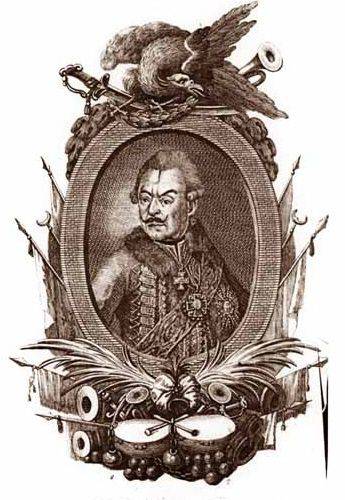 Preparations for the dissolution of the Zaporizhzhya Sich began even before the publication of the manifesto "On the destruction of the Zaporizhzhya Sich and on the attribution of this to the Novorossiysk province". 5 June 1775 Lieutenant-General Peter Tekeli received an order, along with the connections of Major-General Fyodor Chobra, to advance to Zaporizhia. In total, under the command of Tekeli, 50 mounted cavalry regiments of hussars, Vlachs, Hungarians and Don Cossacks, as well as 10 thousands of infantrymen. Since the Zaporozhye Cossacks were celebrating green Christmas time, Tekeli's troops managed to occupy the Zaporozhian Cossacks without a single shot. Lieutenant-General Tekeli gave the Kosta ataman Pyotr Kalnyshevsky two hours to make a decision, after which the latter assembled a Cossack sergeant. At the meeting, it was decided to surrender the Zaporizhian Sich, since resistance against the regular army regiments 50 was almost meaningless. However, Kalnyshevsky had to persuade ordinary Cossacks for a long time not to clash with the Russian army. Ultimately, the Cossacks left Sich, after which the artillery of Tekeli's corps destroyed the empty Cossack fortress. So ended the existence of Zaporizhzhya Sich. Lieutenant-General Tekeli was awarded a high state award, the Order of St. Alexander Nevsky, for the victorious operation. Most of the Cossacks after the dissolution of the Sich remained on the territory of the Ukraine. Peter Kalnyshevsky, Pavel Holovaty and Ivan Globa were arrested and exiled to various monasteries for treason against the tsarist government. At the same time, Kalnyshevsky, who turned out to be in Solovki, lived there until 112 years. Part of the categorical opponents of Russian citizenship moved to the territory controlled by the Ottoman Empire, where it was located in the delta. Danube and received permission from the Turkish Sultan to create the Danube Sech. In response to the favor of the Ports, the Cossacks pledged to provide a force of five thousand to carry out the orders of the Sultan, after which they participated in punitive operations against the periodically revolting Greeks, Bulgarians and Serbs. Thus, the "freedom-loving" and in every way trying to emphasize their Orthodox religion, the Sich became punitive to the Sultan and suppressed their own co-religionists - Balkan Christians. It is noteworthy that a century after the dissolution of the Sich, the regiment of the Danube Cossacks, with a total of 1400 officers and Cossacks, took part in the Crimean War, although it did not enter into direct clashes with Russian troops.
Preparations for the dissolution of the Zaporizhzhya Sich began even before the publication of the manifesto "On the destruction of the Zaporizhzhya Sich and on the attribution of this to the Novorossiysk province". 5 June 1775 Lieutenant-General Peter Tekeli received an order, along with the connections of Major-General Fyodor Chobra, to advance to Zaporizhia. In total, under the command of Tekeli, 50 mounted cavalry regiments of hussars, Vlachs, Hungarians and Don Cossacks, as well as 10 thousands of infantrymen. Since the Zaporozhye Cossacks were celebrating green Christmas time, Tekeli's troops managed to occupy the Zaporozhian Cossacks without a single shot. Lieutenant-General Tekeli gave the Kosta ataman Pyotr Kalnyshevsky two hours to make a decision, after which the latter assembled a Cossack sergeant. At the meeting, it was decided to surrender the Zaporizhian Sich, since resistance against the regular army regiments 50 was almost meaningless. However, Kalnyshevsky had to persuade ordinary Cossacks for a long time not to clash with the Russian army. Ultimately, the Cossacks left Sich, after which the artillery of Tekeli's corps destroyed the empty Cossack fortress. So ended the existence of Zaporizhzhya Sich. Lieutenant-General Tekeli was awarded a high state award, the Order of St. Alexander Nevsky, for the victorious operation. Most of the Cossacks after the dissolution of the Sich remained on the territory of the Ukraine. Peter Kalnyshevsky, Pavel Holovaty and Ivan Globa were arrested and exiled to various monasteries for treason against the tsarist government. At the same time, Kalnyshevsky, who turned out to be in Solovki, lived there until 112 years. Part of the categorical opponents of Russian citizenship moved to the territory controlled by the Ottoman Empire, where it was located in the delta. Danube and received permission from the Turkish Sultan to create the Danube Sech. In response to the favor of the Ports, the Cossacks pledged to provide a force of five thousand to carry out the orders of the Sultan, after which they participated in punitive operations against the periodically revolting Greeks, Bulgarians and Serbs. Thus, the "freedom-loving" and in every way trying to emphasize their Orthodox religion, the Sich became punitive to the Sultan and suppressed their own co-religionists - Balkan Christians. It is noteworthy that a century after the dissolution of the Sich, the regiment of the Danube Cossacks, with a total of 1400 officers and Cossacks, took part in the Crimean War, although it did not enter into direct clashes with Russian troops. Relocation to the Kuban and the service of Russia
At the same time, there was no talk about the destruction of the Zaporizhzhya Cossacks and even about its “dispersion” over the endless lands of the Russian Empire. The part of Zaporizhzhya Cossacks, loyal to the Russian Empire, totaling 12 thousand people, after the dissolution of the Sich, was able to enter the Russian military service - in the dragoon and hussar regiments of the Russian army. At the same time the nobility was granted to the foreman - that is, there was no talk of any real discrimination of the Zaporozhian Cossacks in the Russian Empire. Of course, in the units of the regular army, Cossacks who were accustomed to freemen had not sweet tastes, so they left the service. In 1787, Cossack elders petitioned Empress Catherine, in which they expressed a desire to continue to serve and protect the southern borders of the Russian Empire from threats from Ottoman Turkey. On the instructions of the empress, the celebrated commander Alexander Suvorov took up the creation of the new army, who on February 27 took the oath of the “Loyal Cossack Army” to 1788. Senior officers were given banners and flags confiscated during the dissolution of the Sich. In 1790, two years after its creation, the Army of the faithful Zaporozhian Cossacks was renamed the Black Sea Cossack Army. After the end of the next Russian-Turkish war 1787-1792, the Black Sea Cossack army, in a sign of appreciation for the valor shown in the battles against the Turks, was allocated to accommodate the left bank of the Kuban. In the same 1792, the Kuban lands began to be settled by former Zaporizhzhya Cossacks. In total, more than 26 thousand people moved to Kuban. It was laid 40 smoked villages, 38 of which received the old, Zaporozhye name. In fact, the Zaporizhzhya Sich, only already controlled by the Russian state, was reproduced on the Kuban land - under the name of the Black Sea and Azov, and then - the Kuban Cossack army.
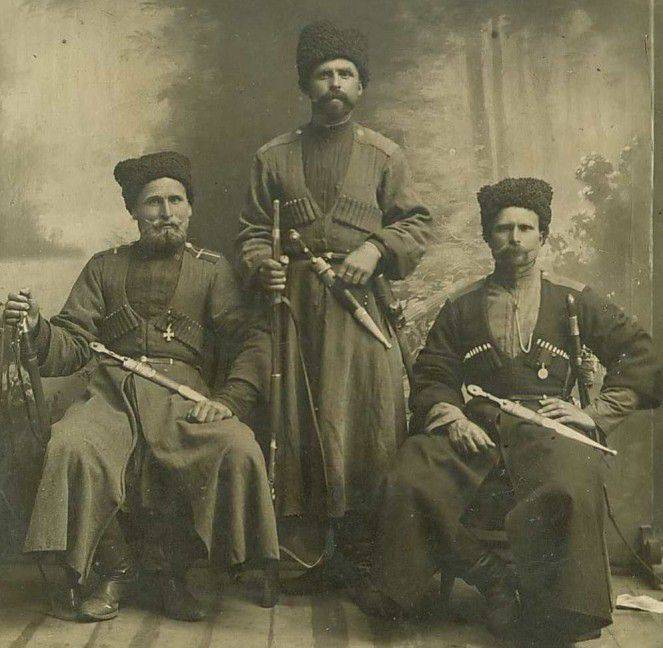
At the new place of residence, the Cossacks could continue their usual service as guards of the Russian border, only the main opponents here became the Nogais and Caucasian highlanders. Thus, we see that for their service to the sovereign, most of the former Cossacks were awarded Kuban land, much more favorable than the lands of Little Russia. In addition, the Cossacks were able to continue to exist as an autonomous Black Sea Cossack army, preserving their customs and way of life. Where is the "genocide" and "discrimination" here, about which modern Ukrainian nationalist authors write? Moreover, that part of the “defectors” —the Transdanubian Cossacks, who in 1828, fed up with life under the rule of the Turkish sultans, was asked to return to Russian citizenship, was not subjected to repression either. Emperor Nicholas I answered affirmatively to the petition filed by the ataman Josip the Smooth one and allowed the Transdanubian Cossacks to return to Russian citizenship, after which the Azov Cossack army was formed, which lasted until 1860 and played an important role in the coastal protection of the Caucasus. After 1860, the Azov army was nevertheless disbanded, and its Cossacks were relocated to the Kuban and included in the Kuban Cossack army, formed on the basis of the Black Sea Cossack army, the Kuban and Khopersky regiments of the Caucasian Linear Army. The further history of the Kuban Cossacks is the history of the heroic service of Russia. Kuban Cossacks participated in most wars and conflicts of the Russian Empire, and then the Soviet Union. Kuban heroes took part in the Victory Parade on Red Square in 1945. It is endless to talk about the exploits of the Kuban Cossacks in the Russian-Turkish wars, the First World War, the Great Patriotic War, about the heroic path of our contemporaries who passed Afghanistan and Chechnya, other "hot spots" in the territory of near and far abroad. Despite the fact that Little Russian traditions and even language are still preserved in the Kuban, centrifugal and Russophobic tendencies have not yet spread among the descendants of the Zaporozhye Cossacks. During World War II, traitors from among the Cossack elite who emigrated after the defeat of the whites in the Civil War in Europe, tried in vain to raise the Cossacks against the Soviet regime. Indeed, the Cossacks suffered a lot during the years of the Civil War and later - in the 1920s - 1930s, when the Soviet leadership pursued a politicization policy. However, even the horrors of rhetoric did not force most of the Cossacks to betray Russia - if on the Wehrmacht side two corps equipped with Cossacks fought, then 17 Cossack corps fought in the ranks of the Soviet Army, and this is not counting the Cossacks who served in all military branches and on navy. Attempts by Ukrainian nationalists to spread their propaganda to the territory of the Kuban, where in the villages still speak virtually the Little Russian dialect, were unsuccessful either during the Civil War, during the Nazi occupation, or during the post-Soviet period of Russian history. But in Ukraine itself appeared a lot of Cossack organizations, it was not clear where the “hetmans” and “atamans” came from, raising their pedigrees to the Zaporizhzhya Sachevichs and reflecting on the cardinal differences between the Cossacks from the Russians, the unique tradition of self-government and the “imperial genocide” of Russia, supposedly destroying the democratic and freedom-loving community of the Cossacks.
Zaporizhian Sich and Ukrainian nationalism
The myth of the Zaporizhzhya Sich became the fundamental construct of the concept of Ukrainian nationalism. The fact is that if you do not turn to the ancient Russian principalities, the Zaporizhian Sich was the only independent Slavic political entity in the territory of modern Ukraine that existed in the Late Middle Ages and Modern Time. Simply - Ukrainian nationalists simply have no place to take examples of sovereign Ukrainian statehood, therefore there is no other way out than to parasitize on the history of the Zaporizhzhya Sich.
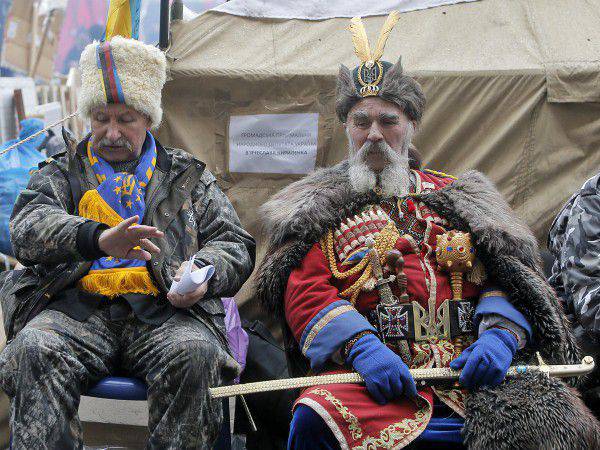
Conflicts between Russia and individual hetmans of the Zaporizhzhya Sich by tendentious Ukrainian researchers were presented as examples of “Russian-Ukrainian wars” in which the “Asian Muscovy” was confronted by a self-governed, democratic Sich. In fact, the Sich’s sovereignty was very conditional - Zaporizhzhya Cossacks rushed between the Polish-Lithuanian Commonwealth and the Ottoman Empire, Russia and Sweden, again between Russia and the Ottoman Empire, looking for more profitable patrons. Yes, the Cossacks did not have to occupy military qualities and valor, but on the other hand, is that enough to build a truly sovereign and prosperous state? As practice has shown - no. The Zaporizhian Sich remained an archaic military democracy, unable to organize a full-fledged economy and backwardness conserving on Little Russia. Moreover, the Zaporozhye Cossacks with their predatory campaigns themselves impeded the economic development of the region and, like any other community, were doomed. The Russian Empire acted with them as humanely as possible, because if the story turned differently, and the lands of the Zaporozhian Cossacks were part of the same Ottoman Turkey or even Sweden, it is likely that only Zaporozhye Cossacks would have had memories. A sultan or a king could simply physically destroy the freedom-loving Cossacks, and only those who would populate the blessed lands of Little Russia would be found. The sensible part of the Zaporizhzhya Cossacks understood this very well and saw their future exclusively with Russia. The common language and the Orthodox faith contributed to the realization of unity with the Russian world, albeit despite the obvious differences in lifestyles, everyday life and culture of the Great Russians and Zaporozhians.
However, already in the twentieth century, Ukrainian nationalism, cultivated by Austro-Hungarian and German political circles, and then by Great Britain and the USA, adopted the myth of the Zaporizhzhya Cossacks. On the other hand, the cultivation of this myth was promoted by the national policy of the Soviet state. In fact, it was in the USSR that the final boundaries of the separation of Great Russians and Little Russians were created - through the policy of “Ukrainization”, which included not only the creation of Ukraine as a political entity, including land that had never belonged to the Little Russia, but also the approval of all sorts of myths that distorted the true history of the Little Russian lands and their population.
As N.Ulyanov noted in his time, “it was once taken for granted that the national essence of a people is best expressed by the party that is at the head of the nationalist movement. Nowadays, Ukrainian independence provides a pattern of the greatest hatred of all the most honored and most ancient traditions and cultural values of the Little Russian people: it subjected to persecution the Church Slavonic language, established in Russia since the time of the adoption of Christianity, and even more cruel persecution erected on the all-Russian literary language, which lay for a thousand years based on the written language of all parts of the Kiev State, during and after its existence. Independents change cultural and historical terminology, change traditional assessments of the heroes of past events. All this means not understanding and not approval, but the eradication of the national soul ”(Ulyanov N. The Origin of Ukrainian Nationalism. Madrid, 1966). These words are also applicable to political speculations around the history of the Zaporizhzhya Sich. Ukrainian nationalists tried to forget everything that connected Zaporizhzhya Cossacks with Russia. The very path of the Zaporizhzhya Cossacks in Ukrainian nationalist literature is surprisingly completed after the Catherine Manifesto on the dissolution of the Zaporizhian Sich. Two and a half centuries of the subsequent existence of the direct descendants of the Zaporizhzhya Cossacks - their blood relatives, grandchildren and great-grandchildren, as part of the Russian state, are completely ignored.
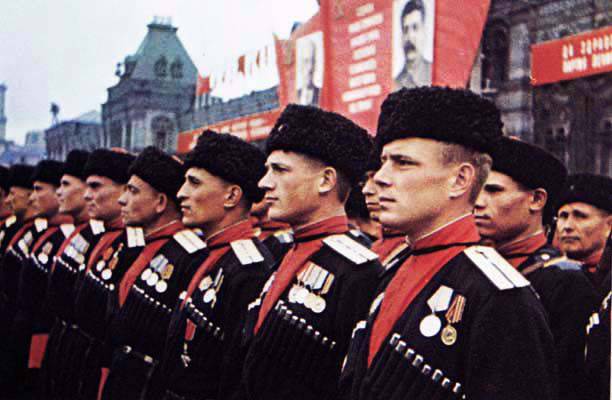
Meanwhile, the Kuban Cossacks accomplished many more feats in the service of Russia than their ancestors, the Cossacks. It is impossible to look without awe at the slender ranks of the Kuban Cossacks in Circassian coats — the very soldiers who conquered the Black Sea coast of the Caucasus for Russia, stared at the southern borders of the Russian Empire, fought heroically in all the wars that the country waged in the XIX - XX centuries. The Kuban Cossacks played an important role in ensuring public order during the reunification of the Crimea with Russia on 2014. The Kuban Cossacks did not remain aloof from the events in New Russia. The confrontation of the Russian world and its worst enemies, which unfolded on the lands of Novorossia, finally confirmed the loyalty of Russia to the genuine Cossacks of the Don and Kuban.
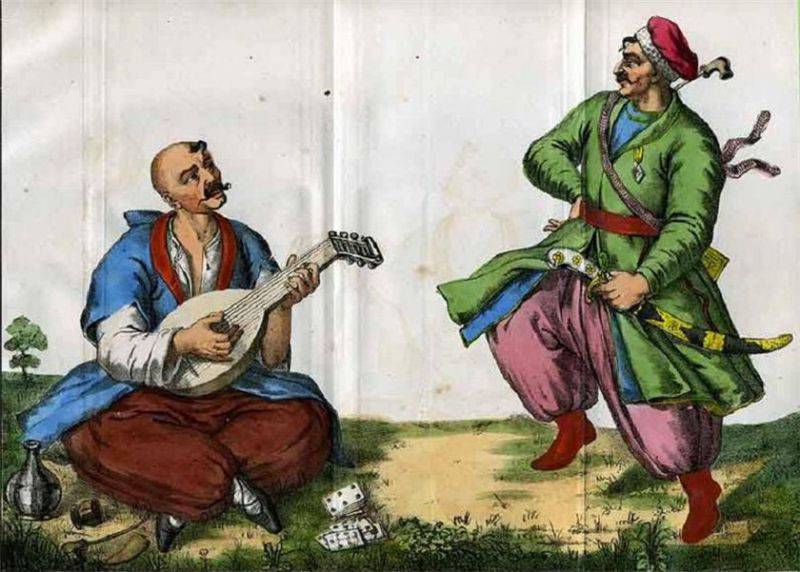
Information